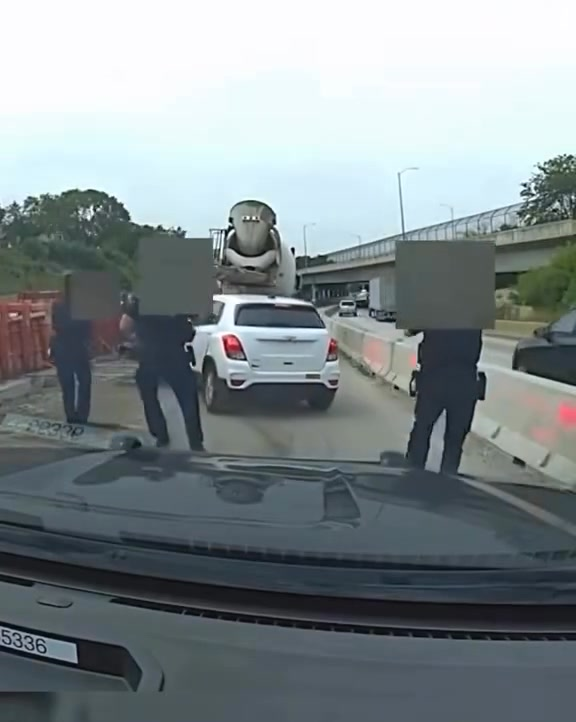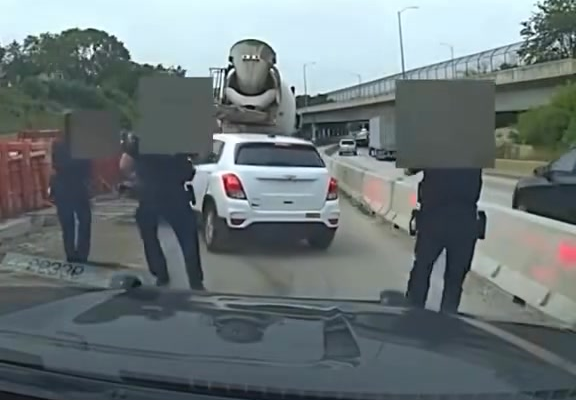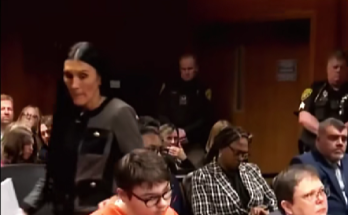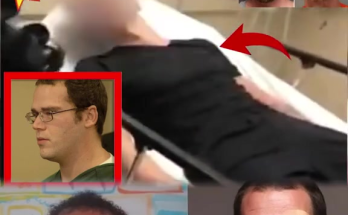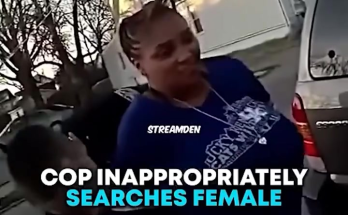What began as an ordinary traffic stop on a dim Charleston road quickly escalated into one of the most serious incidents the city has faced in recent years. In the stillness of the night, a sheriff’s deputy carried out what should have been a straightforward procedure—pulling over a vehicle linked to suspicious activity.
Moments later, the situation spiraled into chaos. Instead of cooperation, the driver allegedly produced a firearm and opened fire. The deputy was struck multiple times before he could fully respond, but through training and determination, he managed to call for backup. Emergency responders rushed him to a nearby hospital, where doctors stabilized his condition. While his injuries were severe, officials confirmed he was expected to recover.
This sudden act of violence has left Charleston grappling with unsettling questions about public safety, gang influence, and the risks officers face daily.
The Suspect Behind the Shooting
Law enforcement quickly identified the suspect as a prominent member of the Gudda Boy Gang (GBG), a group known in Charleston and across South Carolina for its involvement in drug trafficking, weapons circulation, and organized crime. The individual already had a lengthy record of prior arrests and was on the radar of investigators for his alleged leadership role within GBG.
For many, this was not merely a case of a traffic stop gone wrong. Experts suggest that the suspect’s decision to open fire may have been influenced by more than fear of arrest. Some believe it was a deliberate show of defiance—an attempt to signal strength to his associates and to law enforcement.
Police officials described the shooting as the culmination of years of escalating gang-related defiance. Instead of surrendering peacefully, the suspect allegedly chose confrontation, risking not only his own life but the safety of the entire community.
A Coordinated Manhunt
The shooting immediately triggered a large-scale response. Local police, state troopers, and federal agencies coordinated in a manhunt that spanned hours.
Roadblocks were set up across key intersections, helicopters swept over residential neighborhoods, and tactical units searched known gang gathering spots. Tensions rose as officers worked against time, determined to prevent further violence.
Eventually, the suspect was located, leading to a standoff. After negotiations and tactical maneuvers, law enforcement successfully apprehended him without further injury to officers or civilians. His arrest marked the end of a tense night, but the questions raised by the incident remain far from resolved.
Shockwaves Through Charleston
The news of the deputy’s shooting spread quickly, leaving residents shocked and concerned. For many in Charleston, gang violence had seemed like a distant issue, something that happened elsewhere. The attack changed that perception overnight.
Community members gathered outside the hospital, holding vigils with candles and prayers for the deputy’s recovery. Local churches organized prayer circles, and residents offered meals and support to the deputy’s family. The sense of solidarity underscored Charleston’s resilience, but also its deep unease.
“This was not just an attack on one deputy,” said one city leader. “This was an attack on public safety and on Charleston as a whole.”
Law Enforcement Response
The Charleston Sheriff’s Office called the incident a direct challenge to law and order. Officials described it as a calculated assault on the justice system, reminding citizens that even the most routine duties carry risk.
For deputies and officers, the shooting was a painful reminder of the unpredictability of their work. Every traffic stop, no matter how ordinary it may seem, has the potential to escalate. The courage to continue serving despite that risk became a focal point of public statements in the aftermath.
Sheriff’s officials emphasized that steps would be taken to review traffic stop protocols, officer safety equipment, and emergency response systems. The goal, they explained, was not only to prevent similar tragedies but also to reassure both law enforcement families and the wider community.
The Rising Shadow of Gang Activity
Perhaps the most pressing concern raised by the incident is the growing influence of gangs in South Carolina. The Gudda Boy Gang, along with other networks, has long been on the radar of law enforcement. Investigations suggest their reach extends beyond Charleston into surrounding counties, fueled by narcotics distribution and illegal firearms.
Experts warn that the Charleston shooting highlights the dangers of underestimating gang presence. “When violence erupts during something as simple as a traffic stop, it demonstrates how deeply rooted the problem has become,” one criminal justice analyst noted.
Officials are now pushing for:
- Stronger intelligence-sharing among local, state, and federal agencies.
- Tougher penalties for repeat offenders involved in gang activity.
- Community-based prevention programs to deter at-risk youth from joining gangs.
- Enhanced training for officers to recognize and respond to gang-related threats.
The fear is clear: if violent encounters can happen in isolated areas, similar incidents could unfold in more crowded public spaces, placing innocent lives at greater risk.
Community Perspectives
Residents across Charleston have been vocal about their concerns. Many worry about the safety of their neighborhoods, while others call for stronger support for law enforcement.
Parents expressed fears for their children, emphasizing the importance of keeping schools and public spaces safe from gang influence. Community organizations have begun holding meetings to discuss prevention efforts, mentoring programs, and ways to improve cooperation with police.
At the same time, some community leaders stress that enforcement alone cannot solve the problem. They argue that addressing poverty, unemployment, and lack of opportunity is key to reducing gang recruitment and breaking the cycle of violence.
Political and Policy Reactions
Local and state officials condemned the shooting in strong terms, promising swift justice and renewed investment in public safety. Lawmakers have already begun discussing legislation aimed at curbing gang activity, including stricter sentencing guidelines and expanded funding for gang intervention initiatives.
Governor’s representatives emphasized the need for collaboration: “This is not just a Charleston problem. It’s a South Carolina problem. We must work together—law enforcement, schools, faith leaders, and families—to address the root causes of gang activity and ensure that violence like this has no place in our communities.”
Historical Context
Gang-related violence is not new to South Carolina, but incidents directly targeting law enforcement are relatively rare. In past decades, Charleston has faced challenges related to drug trafficking and organized crime, yet many believed progress had been made.
The recent shooting has reignited memories of past tragedies and underscored the reality that progress is fragile. Experts note that gang activity often evolves with changes in the drug trade and that law enforcement must remain vigilant to adapt strategies accordingly.
Moving Forward
As the deputy continues to recover, Charleston stands at a crossroads. The community has shown resilience and unity, but the broader issue of gang activity requires long-term solutions. Officials stress that this moment should be a turning point—an opportunity to strengthen cooperation, increase resources for prevention, and reaffirm commitment to officer safety.
For law enforcement officers, the shooting is a sobering reminder that no encounter is routine. Yet their willingness to continue serving reflects a commitment to protecting Charleston despite the risks.
For residents, the incident is both a warning and a call to action. By supporting law enforcement, engaging in community programs, and addressing social conditions that fuel gang recruitment, Charleston can take steps toward a safer future.
Conclusion
The Charleston deputy’s survival has been described as nothing short of remarkable, but the shooting itself has left an indelible mark on the city. What began as a late-night traffic stop became a defining moment—one that revealed both the dangers of organized crime and the resilience of a community determined to stand against it.
Charleston now faces the task of not only seeking justice for the deputy but also addressing the deeper issues that allowed such violence to unfold. With renewed cooperation between law enforcement, policymakers, and community members, the city has the chance to turn a moment of fear into a catalyst for lasting change.
As one resident said during a hospital vigil: “We will not let fear define us. We will stand together—for our deputy, for our city, and for the future of Charleston.”
